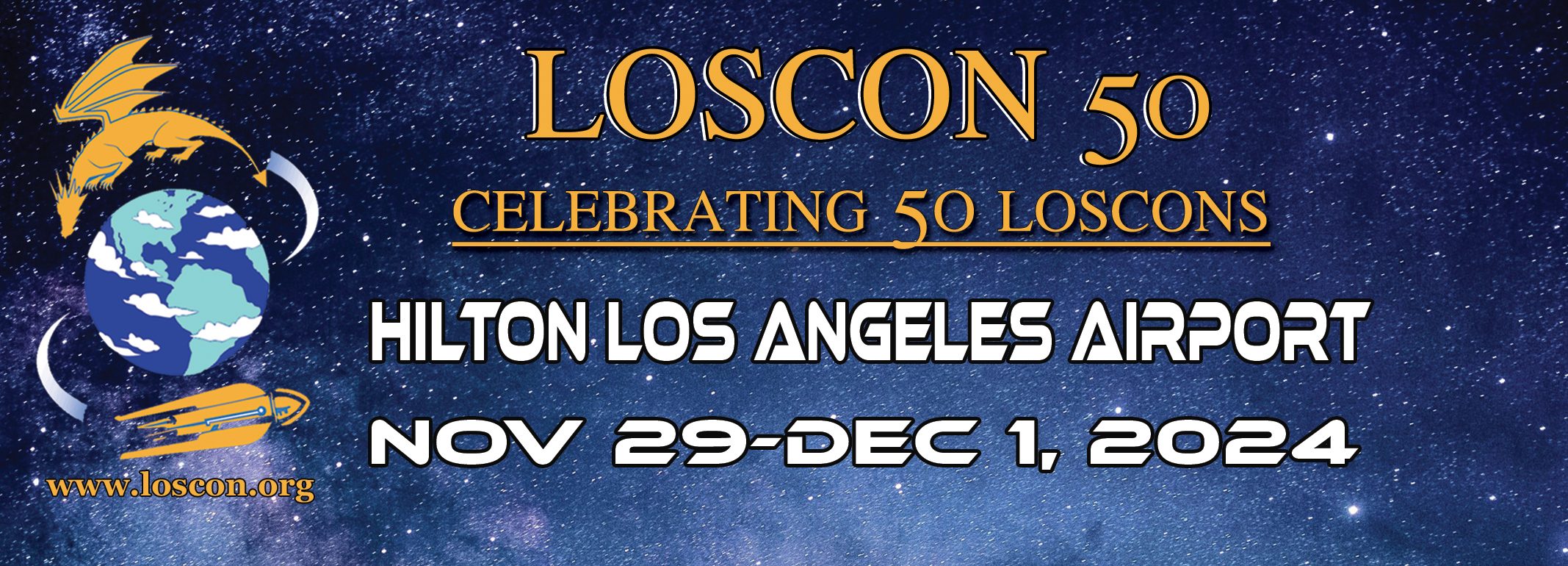Guests of Honor
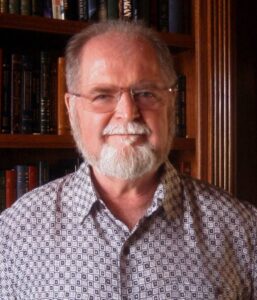
Writer: Larry Niven
The NIVEN file
Born April 30, 1938, in Los Angeles, California, USA, to Waldemar Van Cott Niven and Lucy Estelle Niven (later Washington.)
Raised in Beverly Hills, California. Hawthorne Public School (Beverly Hills,) Cate School (Carpinteria.)
California Institute of Technology, September 1956 to February 1958. Flunked out after discovering a book store jammed with used science fiction magazines.
Honest employment: gas station attendant, summer 1960.
Graduated Washburn University, Kansas, June 1962: BA in Mathematics with a Minor in Psychology. Half the university was scattered to the winds by a tornado a month after I left. They later gave me a D. Litt., an honorary doctorate in Letters.
First story publication: “The Coldest Place”, Worlds of If, December 1964.
Met Marilyn Joyce Wisowaty at the Nycon World Science Fiction Convention, 1967. Married September 6, 1969. No children. We reside in Tarzana, California.
I have written fiction at every length, and speculative articles, speeches for high schools and colleges and conventions, television scripts, political action in support of the conquest of space, graphic novels, and a couple of comic book universes. I’ve collaborated with a wide variety of writers.
My interests:
Science fiction conventions. Role playing games, live and computer. AAAS meetings and other gatherings of people at the cutting edges of science. Comics. Filk singing. Yoga and other approaches to longevity. Hiking and racquetball.
Saving civilization and making a little money. The defense of Earth against incoming giant meteoroid impacts. Moving mankind into space by any means, but particularly by making space endeavors attractive to commercial interests.
In 1980 Jerry Pournelle talked me and Marilyn into hosting a gathering of the top minds in the space industry in an attempt to write a space program for the Reagan government, with goals, timetables, and costs. The Citizens Advisory Council for a National Space Policy met four times during the Reagan Administration, and twice since, for harrowing three day weekends. Attendees have included spacecraft designers, businessmen, NASA personnel, astronauts, lawyers. Adding science fiction writers turns out to be stunningly effective. We can translate! We can force these guys to speak English.
We’ve had some effect on the space program. SDI (Space Defense Initiative, or Star Wars) was drafted at our house in Tarzana. In ’93 we watched the DC-X fly. It was a toy version of a single-stage ground-to-orbit spacecraft, and the Council generated it. Our design lost out to the Skunk Works’ X-33, but the Council caused the revival of the X Program itself.
I grew up with dogs: Keeshonds, the breed my mother raised and shaped for sixty years. I lived with a cat, and borrow dogs to hike with. I have passing acquaintance with raccoons and ferrets. Associating with nonhumans has certainly gained me insight into alien intelligences.
I’ve written on computers since 1978.
Awards
Hugos (or Science Fiction Achievement Awards) for “Neutron Star”, 1966; RINGWORLD, 1970; “Inconstant Moon”, 1971; “The Hole Man”, 1974; and “The Borderland of Sol”, 1975. Nebula for Best Novel: RINGWORLD, 1970. Ditmars (Best International Science Fiction, Australian) for RINGWORLD, 1972, and PROTECTOR, 1974. Japanese awards for RINGWORLD and “Inconstant Moon”, both 1979. Inkpot, 1979, shared with Jerry Pournelle, from the San Diego Comic Convention. Heinlein Award for Career Achievement in the Field of Science Fiction. Sir Arthur Clarke Imagination Award for Service to Society. SFWA Grand Master.
In the Pipeline:
RINGWORLD, a high-end edition from Jeread Walters, with old and new material added.
UNDERTOLD STORIES, my stuff never yet collected, just now being shaped.
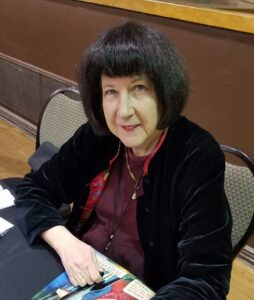
Artist: Laura Brodian Freas Beraha
Doctor Laura Brodian Freas Beraha has been a classical music radio program host in San Francisco and Los Angeles. A past President of the Southern California Early Music Society, she has a PhD in Music, but also studied art. Her publications include TSR, The Easton Press, Analog, and Weird Tales. Laura received [with late husband Frank Kelly Freas] of ASFA’s Chesley Award and was its Western Regional Director. Laura is a Judge in the LRH “Illustrators of the Future Contest.” She is a former Director-at-Large of Costumer’s Guild West, a WesterCon Masquerade winner, and a WorldCon Masquerade Judge. She also established the Dark Shadows Festival Collinsport Players. Laura founded the Bay Area and Valley Area English Regency Societies. A member of the IAAA, and National Cartoonists Society Laura co-edited, FRANK KELLY FREAS: AS HE SEES IT in 2000. She and Bob Eggleton are producing a new comprehensive Kelly Freas artbook. She’s married to Steven Beraha.
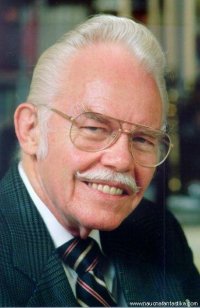
Artist Ghost of Honor: Kelly Freas
A Who’s Who biography, Frank Kelly Freas is recognized as the most prolific and popular fiction artist worldwide. Author of three previously published books of his own illustrations, Freas was the first in his genre to make his works available as prints. He has been publishing his prints for over twenty years, and the work continues.
Freas was the first to receive ten Hugo Awards (he was nominated twenty times) plus an equal number of national and international art and graphics awards. In addition to his work in science fiction, he was the cover artist for Mad Magazine for several years. An official NASA mission artist, his space posters hang in the Smithsonian. His commissioned design for the Skylab I crew patch became the focus of his article and cover painting for Analog Magazine of Science fiction/Fact.
Freas’s original paintings hang in museum, university, and private collections. One of his most ambitious assignments was his commission by the Franciscans to create all five hundred portraits for their BOOK OF SAINTS.
Kelly Freas’s career extends from pulp era Astounding and Planet Stories through science fiction books and magazines, gaming, motion pictures, conceptual medical illustration, and advertising. Jointly they won the 1990 Chesley Award from the Association of Science Fiction and Fantasy Artists for their painting, The Scribe, judged Best Magazine Cover of the Year. In 1991 Kelly Freas was inducted into the National Hall of Fame of the National association of Trade and Technical Schools. Also, in 1991 he received the Readers’ Poll Award from analog for Best cover of the Year. Freas was the recipient of the L. Ron Hubbard Lifetime Achievement Award in 1999. He was for seven years the Coordinating Judge of the L. Ron Hubbard Illustrators of the Future Contest, of which he remained a quarterly Judge until his passing in 2005.
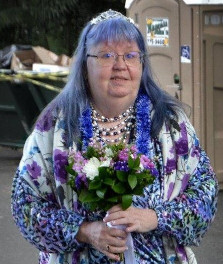
Music Guest of Honor: Kathy Mar
Kathy Mar has been singing since she was three, performing since she was sixteen, filking since she was in her twenties, and songwriting through it all. But there is so much more to it than that. She is a tireless promoter of the filk genre and loves encouraging amateur songwriters and performers to participate in the circle. Her voice and songwriting style are uniquely hers, enjoyable, and recognizable. This is what all songwriters want, ultimately, but only some achieve. She has nine albums to her credit and is currently wrapping up a project with Mystic Fig studios, promoting the songs and voices of many throughout the Filk community. She has been the recipient of the Pegasus Award seven times.
She enriches many lives with music and her pursuit of kindness. At a circle at one small convention, she patiently taught and encouraged people who had never sung in front of anybody to stand up and sing. Despite her great ability – or perhaps because of it – there was no person too awkward, shy, alone, bold, or off-key to sing in her circle. Kathy has enriched the lives of many fans who love her songs and has never held back when performing. She is the living embodiment of what filk means: an inclusive community of fannish people who love to sing and dream.
Filk is a musical culture, genre, and community tied to science fiction/fantasy fandom. The genre has been active since the early 1950s, and played primarily since the mid-1970s. An early mention of filk songs can be seen in the zine Day Star.
It’s commonly described casually as “science-fiction folk music” — and in fact, the word “filk” comes from a typo for “folk” in a 1950s essay – but that falls short of the full range of music that’s considered filk. The exact definition is controversial; like the definition of “fanfiction,” fans do not agree on the boundaries of the genre.
It has been defined as the folk music of the science fiction community, and to a lesser extent, of fans in general. The Interfilk website has a good set of links to a variety of definitions.
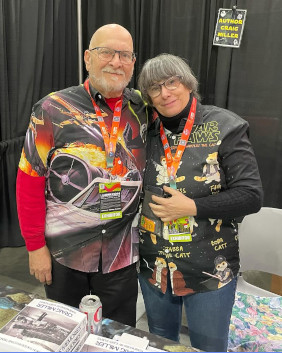
Fan Guests of Honor: Genny Dazzo & Craig Miller
Genny Dazzo grew up in Brooklyn, New York and found Fandom through Star Trek. She got involved with the early Star Trek conventions in New York City, first, attending, and then helping to run them. Through the people she met at those conventions, she found herself joining Lunarians, Fanoclasts, and Fistfa, local science fiction clubs in New York, and through those clubs got involved with running Lunacon, the New York-area science fiction convention. Once she moved to Los Angeles, she started attending LASFS meetings and got involved with Loscon. Dr. Dazzo holds a Ph.D. in Theoretical Chemistry as well as Masters Degrees in Chemistry and Physics and is well versed in many different scientific disciplines. During her career she held senior positions at Software, Pharmaceutical, Telecommunications, Entertainment, and Aerospace companies. She’s also written scripts for several animated TV and web series.
Craig Miller joined LASFS in 1968 after he spent an afternoon with Ray Bradbury who suggested he join “the science fiction club I belong to”. Over the next 50+ years, he’s been active in LASFS (including 10 years as Chairman of the Board of Directors), worked on Loscons (starting with the very first one and chairing two of them since), and otherwise been active in Los Angeles Fandom. In the “greater world” of Fandom, he’s published fanzines, attended far too many conventions to count, and worked on many, including co-chairing a Westercon (Oakland in 1975) and a Worldcon (in Anaheim in 1984). He achieved degrees in Child Development and Social Psychology and, like most people, ended up only using his degrees peripherally. Professionally, his career has been all over the pop culture map. He started in Hollywood as a publicity executive, working with Lucasfilm, Warner Bros., Disney, Universal, Jim Henson Productions, etc. on such films as Star Wars, The Empire Strikes Back, The Dark Crystal, Altered States, The Muppets Take Manhattan, Splash, The Thing, The Last Starfighter, Real Genius, The Wicker Man, Excalibur, and others, working directly with George Lucas, Jim Henson, and other creative powerhouses. Wanting to do something more directly creative, he switched to writing, developing, and producing television. He has well over 300 TV credits in all areas, from Showtime’s horror anthology series The Hunger to the Emmy-winning PBS series Curious George. Most of his work has been in animation, on shows ranging from The Smurfs to The Real Ghostbusters to Beast Wars. He’s done shows for China, Australia, France, Italy, Dubai, etc. He’s been a guest speaker at animation events all over the U.S. and in France, Italy, India, Spain, Norway, and more. His book about his time at Lucasfilm, “Star Wars Memories” is available from Amazon, Barnes & Noble, and Walmart.
Craig Miller & Genny Dazzo met when Genny, who was living in Brooklyn, decided to attend Windycon, a Chicago-area science fiction convention, along with a few of her girlfriends. Craig, who was living in Los Angeles, was also attending. Because he was used to West Coast conventions, he “knew” a Friday, Saturday, Sunday convention started Friday morning and figured people would be around on Thursday afternoon setting up. He was wrong. Flying in on Thursday afternoon, he only found one person he knew at the hotel, Jan Howard Finder. So he and Jan spent the late afternoon talking in the hotel bar. Jan had plans to meet some friends for dinner and invited Craig along. The friends he was dining with? Genny and her girlfriends, who would be arriving around dinner time. Genny and Craig spoke several times over the course of the convention and he got her phone number. (She says he asked her for it. He says she offered it to him, saying “if you’re ever in New York…”. She says she’d never do that. He says “I wasn’t brave enough or smart enough to do that”. Whichever, he got her number.) Three weeks later, he was in Manhattan as Producer for Lucasfilm, shooting segments of Sesame Street with R2-D2 and C-3PO as guest stars. He called her up. They went out to dinner. And the rest, as they say, is history.
